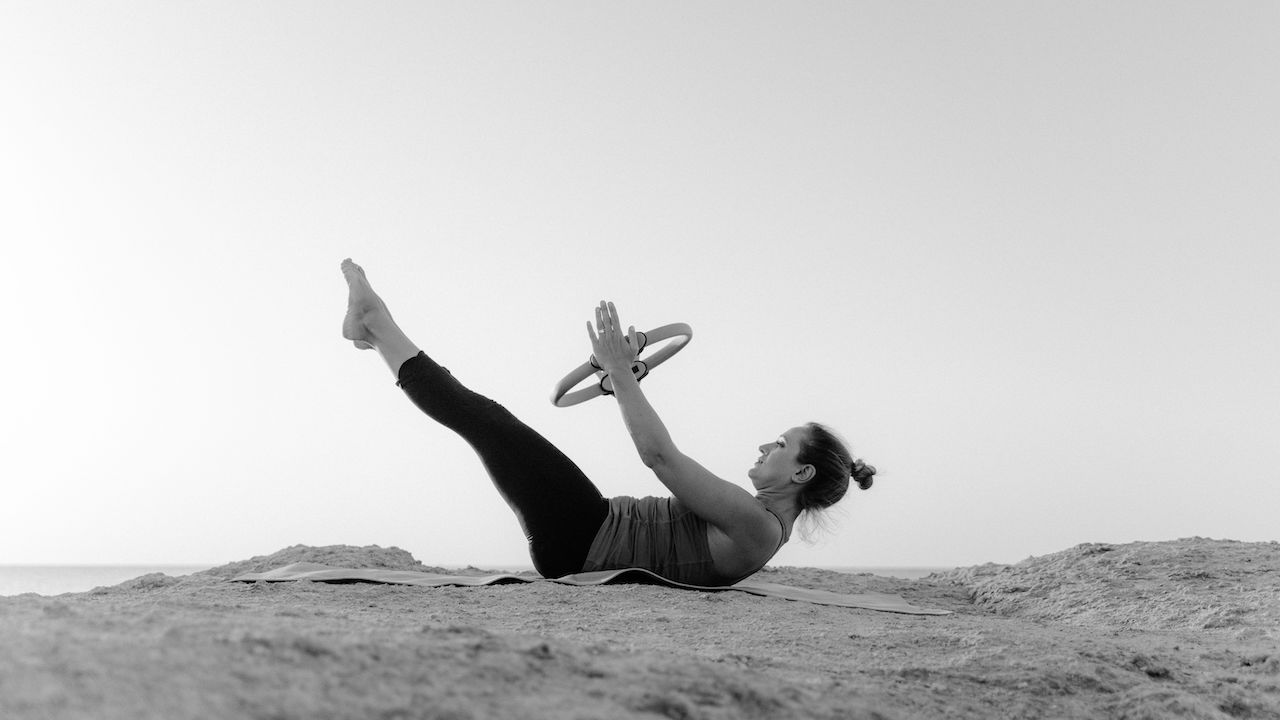

Are you looking for a way to improve your physical health and well-being? Have you considered incorporating Pilates into your physical therapy routine?
Pilates is a low-impact exercise method that focuses on strengthening the core muscles, improving flexibility, and enhancing balance and coordination. When combined with physical therapy, it can help alleviate pain, reduce inflammation, and promote overall wellness.
The benefits of Pilates in physical therapy are numerous. Whether you are recovering from an injury or managing a chronic condition, it can be tailored to meet your specific needs and goals. By working with a trained physical therapist who specializes in Pilates, you can develop a customized exercise program that addresses your unique challenges and helps you achieve optimal results.
Pilates is a physical fitness system developed by Joseph Pilates in the early 20th century. It focuses on the core muscles, flexibility, balance, and body awareness through controlled movements. It has evolved to include different equipment such as reformers, Cadillacs, barrels, and chairs to add resistance to the exercises.
Physical therapy (PT) is an allied health profession that helps people recover from injuries or illnesses through exercise, manual therapy, education, and other interventions. PT aims to promote mobility, reduce pain, restore function and prevent disability. For more, check out our complete guide on physiotherapy.
Compared to other exercise modalities like weightlifting or cardio workouts that focus on specific muscle groups or endurance training respectively, Pilates offers a holistic approach to physical fitness that addresses both strength and flexibility while emphasizing proper alignment and breathing techniques.
Feeling stiff and inflexible? Don’t worry, there’s a solution that will have you moving with ease in no time.
Pilates, when used in physical therapy, can improve your flexibility significantly. Not only does it include various types of stretches that lengthen the muscles and increase the range of motion, but it also utilizes specialized equipment to aid in achieving optimal stretching positions.
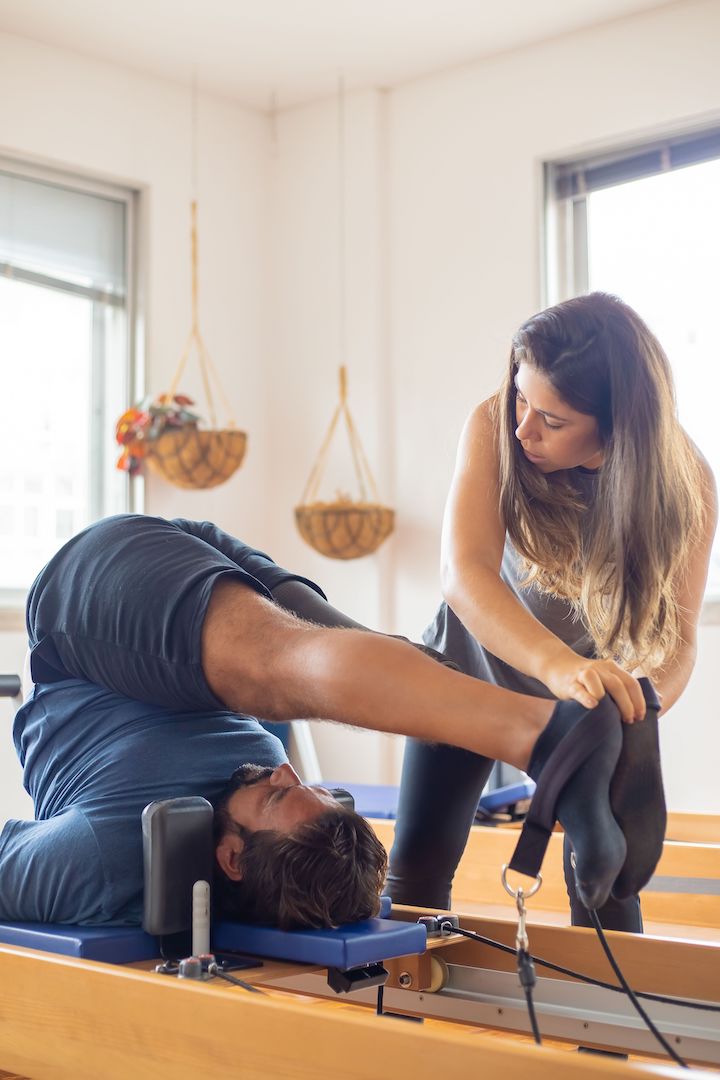 Photo Credit: Kampus Productions
Photo Credit: Kampus Productions
One of the main benefits of improved flexibility through Pilates is reducing pain and discomfort caused by tight muscles. When muscles are tight or restricted, they can put pressure on joints and lead to injury or chronic pain.
Learn how physical therapy in general uses and benefits from flexibility exercises.
By incorporating Pilates exercises into your physical therapy routine, you’ll be able to loosen up those tight spots and alleviate any discomfort you may be experiencing. Plus, an increased range of motion means better overall function for daily activities and sports performance. So why not give it a try?
As you work through the increased strength section of your physical therapy routine, you’ll start to notice a significant difference in your muscle tone and definition. Resistance training is an integral part of Pilates, which means that your muscles will be constantly challenged as you progress through your exercises. This can lead to an increase in muscle activation, allowing you to push yourself even further and achieve better results.
In addition to improving your overall strength, incorporating resistance exercises into your routines can also help with specific areas of the body. For example, if you’re struggling with weak glutes or low back pain, targeted resistance movements can help activate those muscles and provide relief.
There’s more to strength training in physical therapy, so why not have a look?
By building up these weaker areas over time, you’ll not only become stronger but also reduce the risk of future injuries. Overall, incorporating increased strength training into your Pilates physical therapy regimen has numerous benefits that can help improve both your physical health and quality of life.
Improving your balance and coordination through resistance exercises in your Pilates routine can be particularly beneficial for the elderly. As we age, our risk of falling increases due to a decline in muscle strength and balance. However, studies have shown that incorporating Pilates into physical therapy can help reduce this risk by up to 47%.
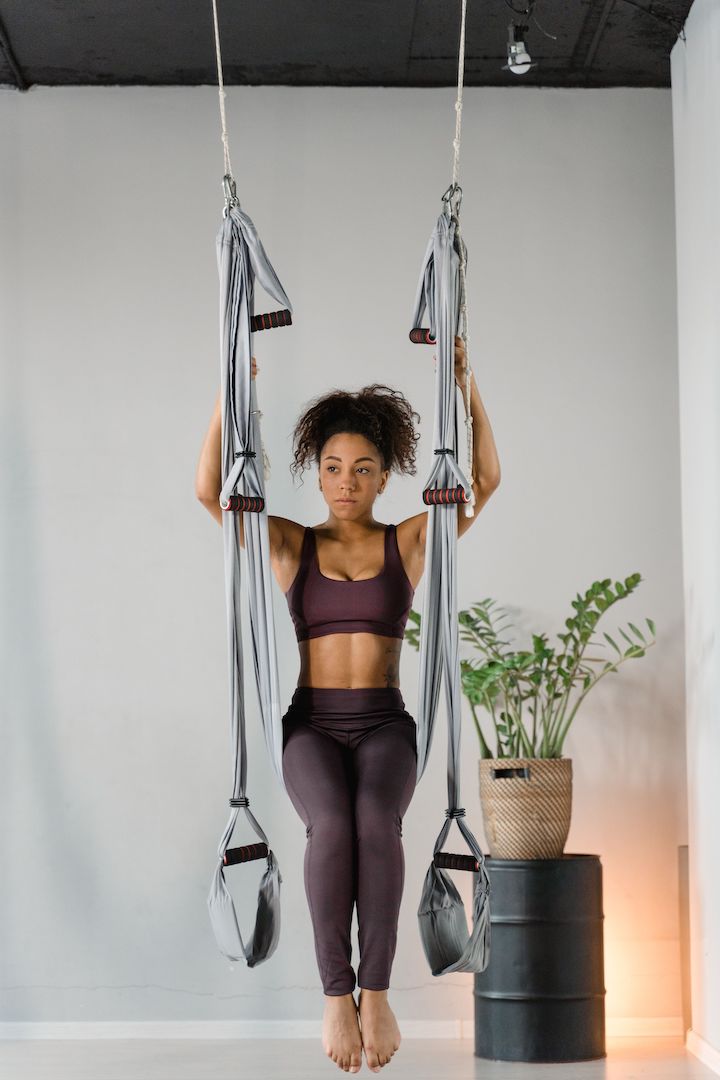 Photo Credit: Tima Miroshnichenko
Photo Credit: Tima Miroshnichenko
The controlled movements and focus on core strength found in Pilates can improve overall balance, making it easier for older individuals to maintain their stability and avoid falls. But Pilates isn’t just for the elderly – athletes can also benefit from improved balance and coordination. By honing these skills, athletes can enhance their performance in sports that require quick reflexes and precise movements.
Also see our other content on how physical therapy can help the elderly prevent falls and injuries in general.
Additionally, better coordination means less chance of injury during training or competition. Incorporating Pilates into an athlete’s regular workout routine has been shown to increase flexibility while simultaneously improving core strength, which is crucial for maintaining proper form during intense physical activity.
If you’re tired of feeling sore and achy after a workout, incorporating Pilates into your routine can help reduce pain and inflammation, leaving you feeling refreshed and ready to tackle whatever comes your way!
Pilates can also aid in pain management by strengthening the core muscles that support the spine. This improved stability reduces stress on the joints, which can alleviate chronic pain caused by conditions such as arthritis or back problems. Also, see how physical therapy can help in injury prevention and pain management, in general.
Additionally, since it focuses on slow, deliberate movements that engage both the mind and body, it can have a calming effect on the nervous system. As a result, many people find that regular Pilates practice helps them manage stress levels more effectively while promoting faster recovery time from injuries or surgeries.
By incorporating Pilates into your fitness routine, you’ll learn how to breathe more deeply and fully, allowing you to feel like a balloon expanding with air.
Pilates breathing exercises are based on the principle of utilizing breath as a tool for movement and relaxation. These exercises help improve your mind-body connection by making you more aware of your breathing patterns.
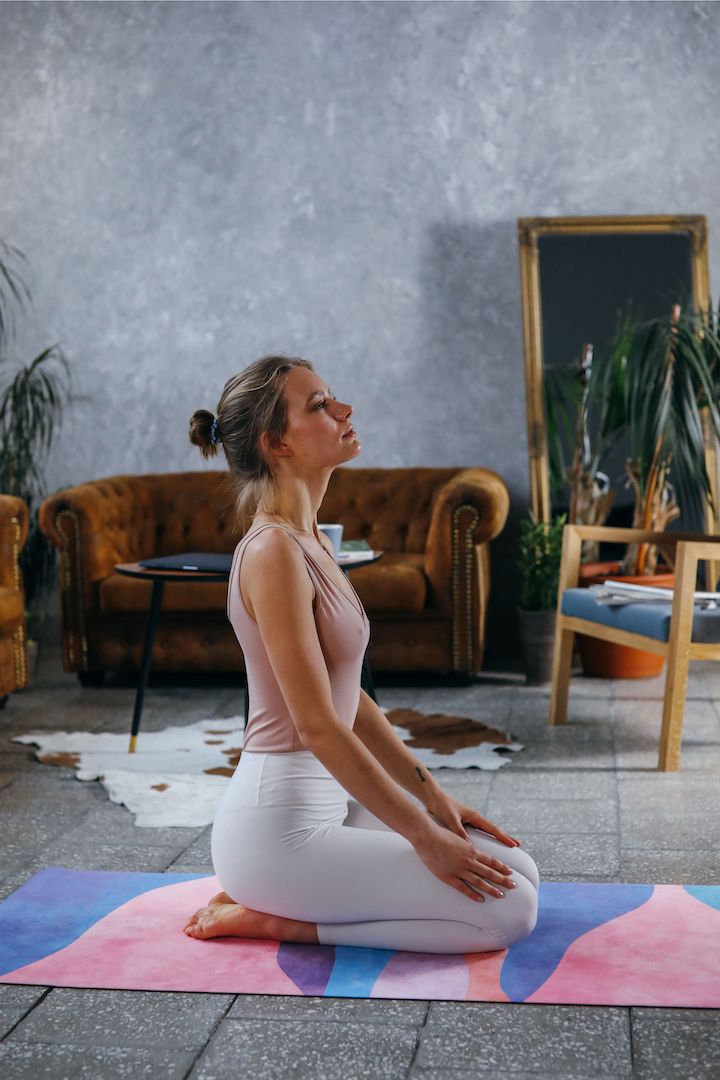 Photo Credit: KoolShooters
Photo Credit: KoolShooters
The controlled breathing techniques in Pilates can improve lung capacity, increase oxygen intake, and reduce stress levels. As you become more proficient in these breathing techniques, you’ll notice that it becomes easier to maintain proper posture during exercise or daily activities.
Additionally, practising Pilates can help people with respiratory conditions such as asthma or COPD by improving their lung function and overall well-being. By prioritizing proper breathing techniques in your physical therapy sessions, you’re taking an active role in healing your body from the inside out.
Take a moment to focus on yourself and relieve stress with the mental health advantages of adding controlled breathing techniques to your fitness routine.
The mind-body connection is powerful, and Pilates for anxiety can help you achieve a sense of calmness and relaxation. By practising deep breathing exercises during your sessions, you’ll learn how to regulate your breath, which in turn helps reduce stress levels and alleviate feelings of anxiety.
In addition to reducing anxiety, incorporating Pilates into your physical therapy regimen can also improve overall mental health. As you move through each exercise with mindfulness and intention, you’ll begin to feel more present in the moment.
This type of mindfulness practice can help increase self-awareness and decrease negative thoughts. By making time for yourself to focus on both physical and mental well-being, you’re taking an important step towards serving others by being the best version of yourself possible.
Get ready to tailor your Pilates routine with an individualized approach that targets specific conditions and yields targeted results. With the guidance of a qualified physical therapist, you can customize your exercises to address your unique needs and goals, whether you’re recovering from an injury or managing a chronic condition.
By incorporating equipment like resistance bands, balls, and rollers into your practice, you can enhance your progress and build strength where it matters most.
 Photo Credit: Pavel Danilyuk
Photo Credit: Pavel Danilyuk
One of the greatest benefits of utilizing Pilates in physical therapy is the ability to personalize each session based on your current state of health. For example, if you’re struggling with lower back pain, a physical therapist may recommend exercises that focus on core stability and strengthening the muscles around the lumbar spine.
Alternatively, if you have arthritis in your hips or knees, they may suggest modifications that reduce the impact on these joints while still allowing for effective movement patterns.
Read more in our blog post about the overall benefits of physical therapy in arthritis management.
No matter what condition you’re dealing with, customized Pilates exercises can help improve flexibility, balance, coordination, and overall fitness levels – all while minimizing discomfort and maximizing results!
The benefits of combining Pilates with traditional physical therapy are numerous. Pilates exercises can help improve flexibility, balance, and strength, while also promoting relaxation and reducing stress.
Pilates as an alternative to traditional physical therapy techniques is another option worth considering. Many people find that it provides the same benefits as more conventional forms of physical therapy but with a greater focus on overall wellness and long-term health.
Combining these approaches can result in a comprehensive treatment plan that addresses all aspects of your condition and helps you achieve optimal results in less time than you might expect.
As you continue to incorporate Pilates into your wellness routine, you’ll notice that it’s like planting a seed – with consistent care and attention, it will grow stronger and more resilient over time.
Its long-term benefits in physical therapy are numerous, especially when used as part of home exercise programs for patients. It not only helps to improve strength, flexibility and balance but also reduces the risk of falls among elderly patients.
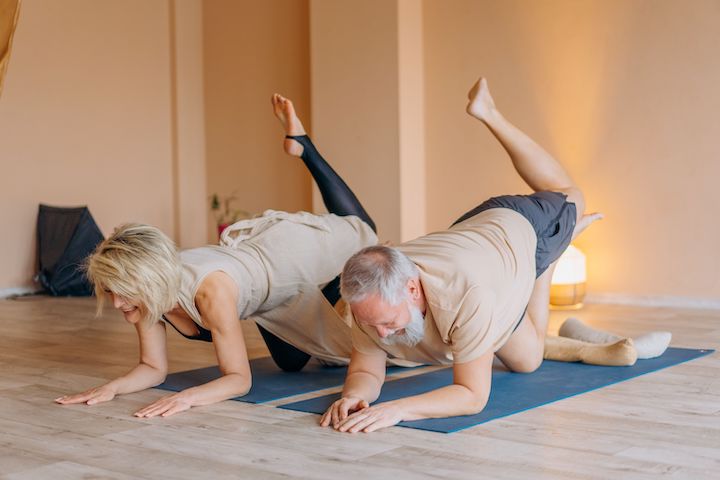 Photo Credit: Mikhail Nilov
Photo Credit: Mikhail Nilov
One of the key advantages is that it can be tailored to individual needs and abilities. As such, it can help maintain progress made during physical therapy sessions even after treatment ends.
In addition, regular practice has been shown to reduce chronic pain by increasing body awareness and promoting better posture. This leads to improved overall quality of life, as well as greater confidence in performing daily tasks without worrying about pain or injury.
You may have heard some common misconceptions about its effectiveness in physical therapy. One of the most prevalent is that it’s only for people who are already quite fit and flexible. However, Pilates can actually be a great tool for anyone recovering from an injury or dealing with chronic pain.
Another misconception is that it’s not challenging enough to provide a real workout. This couldn’t be further from the truth – Pilates exercises can be incredibly effective at building strength and improving flexibility when done correctly.
Wondering if pilates can be used as a primary treatment for certain conditions or if it always needs to be used in conjunction with other therapies?
It really depends on the individual and their unique situation. It can definitely be used as a primary treatment for some conditions, such as low back pain or knee injuries. However, in other cases, it may be more appropriate to use Pilates as a complementary therapy alongside other treatments like physical therapy or medication.
Ultimately, the decision about whether pilates is right for you should be made in consultation with a qualified healthcare provider who has experience using this type of exercise as part of a comprehensive treatment plan.
You’ve been consistently attending your Pilates sessions at physical therapy, and you’re wondering when you’ll start seeing results.
The effectiveness of Pilates in physical therapy is undeniable, but it’s important to manage your expectations when it comes to how long it takes to see these benefits. While some people may notice improvements within a few weeks, others may take months or even years to achieve their desired outcomes.
However, one thing is for sure- the longer you stick with it, the more benefits you can expect to see in terms of improved flexibility, strength, balance, posture and overall well-being. So keep going and trust that your hard work will pay off in due time!
If you’re an elderly patient or have limited mobility, you may be wondering if Pilates is right for you in physical therapy. The good news is that there are many benefits for elderly patients, such as improved balance, flexibility, and strength.
Additionally, Pilates can be modified to accommodate those with limited mobility by using props such as chairs or resistance bands. Your physical therapist can work with you to create a personalized Pilates program that suits your individual needs and abilities.
When it comes to comparing Pilates to traditional physical therapy, there are some key differences in effectiveness and outcomes.
While traditional PT may focus on specific exercises targeting problem areas, Pilates takes a more holistic approach by strengthening the entire body. This can lead to improved posture, flexibility, and overall physical function.
Additionally, Pilates has shown great promise in chronic pain management for conditions such as lower back pain and osteoarthritis.
Overall, while both approaches have their benefits, incorporating Pilates into your physical therapy regimen may offer unique advantages that could lead to better long-term results.
Overall, incorporating Pilates into your physical therapy regimen can provide numerous benefits for your body and mind. Not only can it improve flexibility, strength, balance, and coordination, but it can also reduce pain and inflammation while providing stress relief and mental health benefits.
Just like a well-balanced meal or a good night’s sleep, Pilates has become an essential ingredient in many people’s lives. Whether you’re recovering from an injury or simply looking to improve your overall health and fitness, the benefits of Pilates are undeniable.
So why not give it a try? Your body (and mind) will thank you!
There are no results matching your search.
Reset